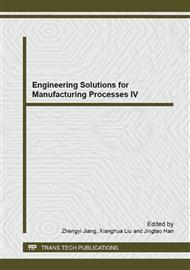p.1329
p.1333
p.1337
p.1343
p.1347
p.1353
p.1358
p.1362
p.1375
A Study on the Calculation Model of Rock Soil Thermal Conductivity in the Design of the Ground Source Heat Pump System
Abstract:
The rock soil thermal conductivity is the most important design parameter for the ground source heat pump system. Based on the equation applied for the heat transfer between the geothermal heat exchanger and its surrounding rock soil, a quasi-three dimensional heat conduction model showing the heat transfer inside the borehole of the U-tube was established to determine the thermal conductivity of the deep-layer rock soil. The results obtained show that the average thermal conductivity got through calculation and actual determination in a tube-embedding region of the ground source heat pump engineering were 1.895 and 1.955W/(m·°C), respectively. The soil layer, which has a great thermal conductivity and a strong integrated heat transfer capability, is suitable for the use of the ground source heat pump system with the tubes embedded underground. The soil layer, with a body temperature of 19 °C and a higher initial temperature, is suitable for the heat extraction from underground in winter. The deviation between the calculation and the determination of the average thermal conductivity in the abovementioned region was 0.06, which could meet the required precision, indicating that the results from the calculation could be used for design.
Info:
Periodical:
Pages:
1347-1352
Citation:
Online since:
February 2014
Authors:
Price:
Сopyright:
© 2014 Trans Tech Publications Ltd. All Rights Reserved
Share:
Citation:


